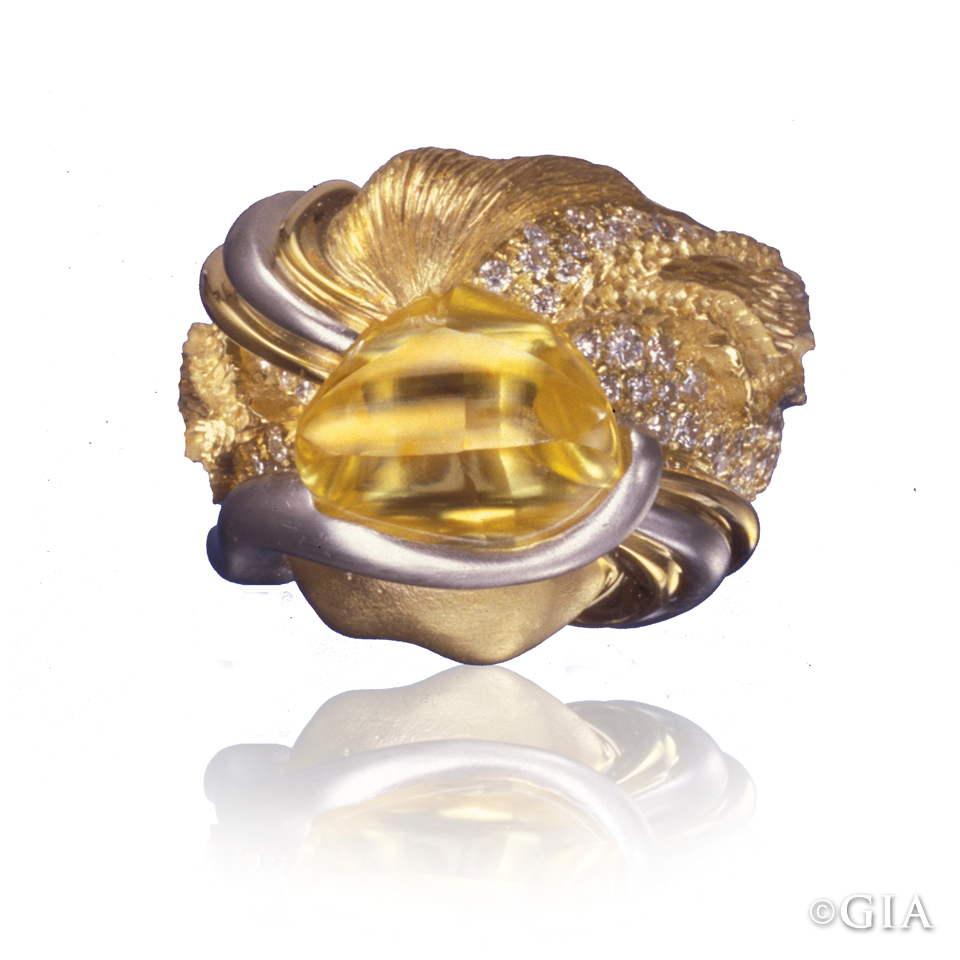If you love yellow diamonds, you’re not alone. Diamond connoisseurs spend millions on these stunning gemstones.
Prices for the finest yellow diamonds have reached breathtaking levels. A 12.16 ct Fancy Vivid yellow sold for $155,232 per carat In November 2010. A 43.36 ct Fancy Vivid yellow sold for $2,654,802.70 ($71,871 per carat) in November 2011. And a 27.42 Fancy Intense yellow sold for $76,470 per carat in December 2011.
Yellow diamonds were rarely seen until their discovery in South Africa in the late 1860s. They were so rare, in fact, that the famed gem merchant who found the Hope Diamond, Jean-Baptiste Tavernier (1605 – 1689), thought them noteworthy enough to mention seeing a 137.27 ct yellow diamond that he variously called “Florentine,” the “Austrian Yellow,” and the “Grand Duke of Tuscany.”
Yellow diamonds are less common than the colorless to light yellow diamonds associated with the D-to-Z color grading scale but far more common than blue, pink, and red diamonds.
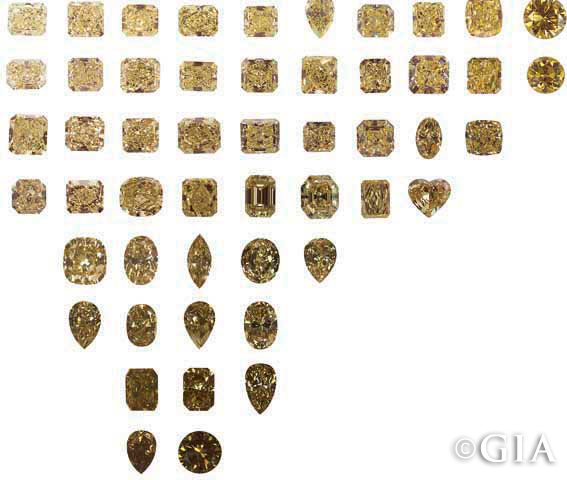
The hue of a yellow diamonds can have different color appearances depending on its tone and saturation, as seen in this chart which shows diamonds in the warmer hue range.
Yellow diamonds are considered to be a colored diamond and graded as “Fancy” when they fall outside the D-to-Z range (colorless to light-yellow). A Fancy grade means that the yellow diamond must have more color than the Z masterstone. The GIA Colored Diamond Grading System assigns yellow diamonds one of six color grades: Fancy Light, Fancy, Fancy Dark, Fancy Deep, Fancy Intense, and Fancy Vivid.
The presence of nitrogen causes a diamond to appear yellow. The intensity of the yellow color is dependent upon varying amounts of nitrogen. Colorless diamonds, in contrast, have little to no nitrogen, therefore, do not show noticeable color.
Yellow diamonds are often cut in fancy shapes, like the radiant cut. Cutters do this because a diamond’s cut can have a noticeable impact on its apparent color when viewed from above. Cutters will even recut diamonds to maximize the intensity of the diamond’s face-up color.
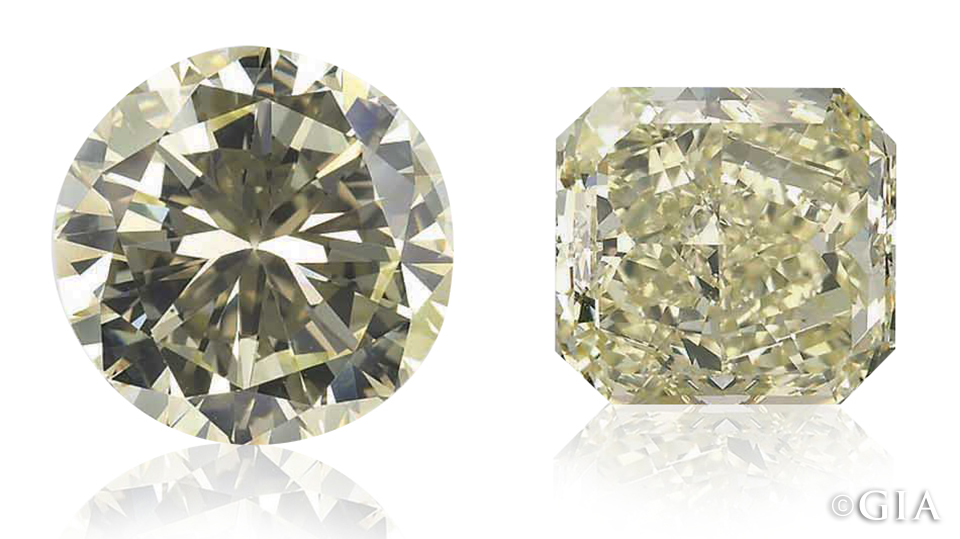
This 6+ ct. round brilliant diamond (left) was graded in the W-X range of the D-to-Z scale, putting it in the light yellow range. When recut as a 4.61 radiant (right), it was graded Fancy yellow. Courtesy of the Scarselli family.
The color of most yellow diamonds may appear noticeably darker and stronger when set in a mounting. A gold setting will make the yellow color appear deeper, while a white metal setting will make the color appear lighter. Keep this in mind if you are purchasing a mounted diamond, as you may not be seeing its true color.

The type of metal used in the ring can affect how you perceive the diamond’s color. Courtesy of the Scarselli family.
Diamonds can be treated to enhance or change their color using a variety of processes including HPHT (High Pressure, High Temperature), irradiation, annealing and coating. HPHT can turn some brownish diamonds yellow, greenish yellow or green. Irradiation can produce blue, green, yellow, brown, black and other colors.
Annealing, a controlled heating and cooling process, can be used alone or in conjunction with irradiation and HPHT). When used after irradiation, annealing can produce brown, orange, or yellow. Annealing after HPHT and irradiation has been reported to yield pink, red or purple. Diamonds that have been irradiated and/or annealed are sensitive to heat and their color can be altered during jewelry repairs.
Coatings can be applied to the surface of polished diamonds to produce a variety of colors including yellow, pink, orange, blue, and violet. Coatings can be scratched or damaged by heat and chemicals. If your diamond is coated, it is important to tell your jeweler before repairs or polishing.
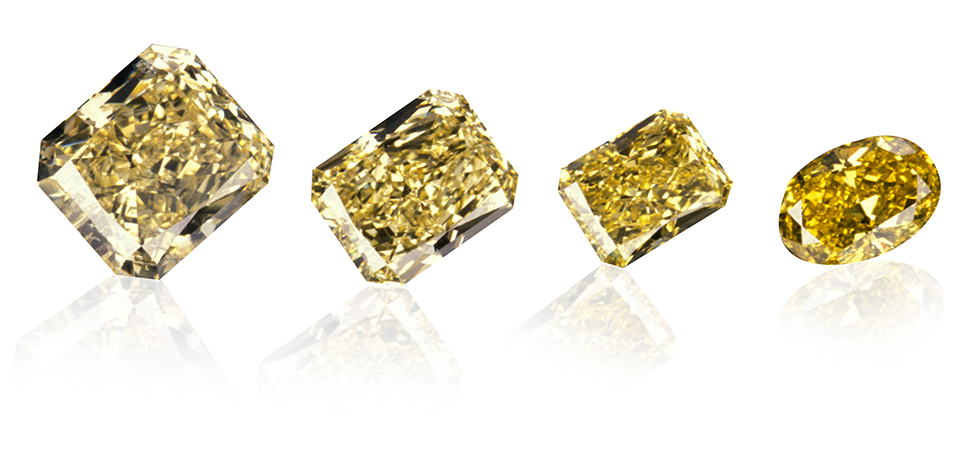
These four yellow diamond masterstones mark the most commonly seen lower saturation boundaries of their respective grade ranges. L-R: Fancy Light, Fancy, Fancy Intense and Fancy Vivid. (C) GIA and Robert Weldon
A diamond’s color grade and whether it’s natural or treated, can dramatically affect its price. A GIA Colored Diamond Grading Report or a GIA Colored Diamond Identification and Origin Report will state the diamond’s color grade and if it’s natural or treated, empowering you to make a smart buying decision.
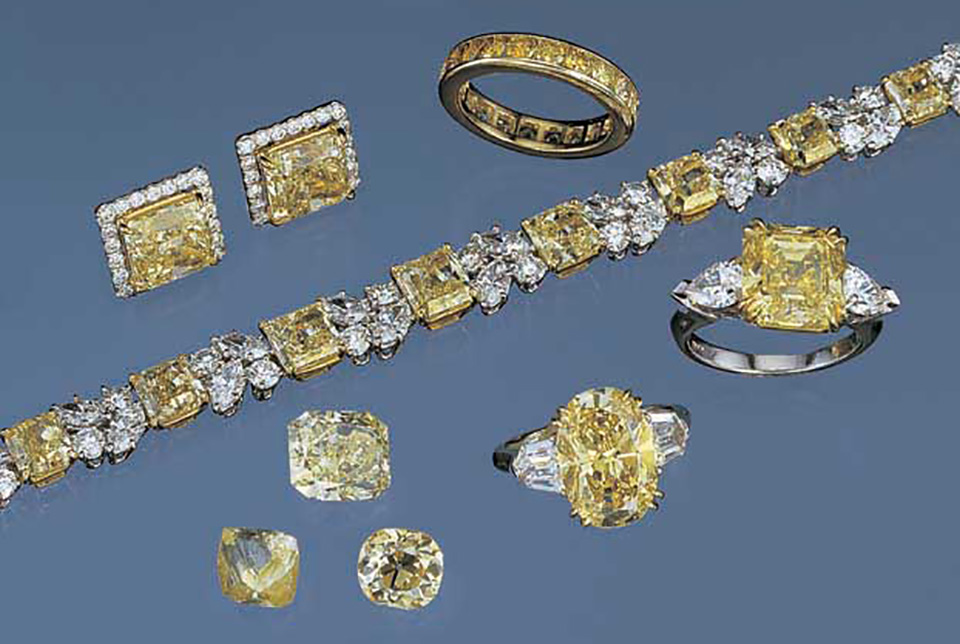
The bracelet and the 4.13 ct oval and 6.20 ct emerald cut in the rings are courtesy of Harry Winston Inc.; the 8.70 ct (total weight) StarBurst cuts in the earrings are courtesy of Jonathan Doppelt Inc.; the yellow gradation eternity band is courtesy of N. Smid; and the two unmounted diamonds and the crystal are courtesy of the Scarselli family. © GIA and Harold & Erica Van Pelt
While abundant compared to other colored diamonds, fancy-color yellow diamonds represent a small portion of overall diamond production. Their beauty and the depths of color in which they occur offer a wide range of possibilities to the jeweler.
Main Image is a 10.12 ct. Fancy Vivid Yellow Diamond. Courtesy of the Scarselli family.
Custom Field: Array
